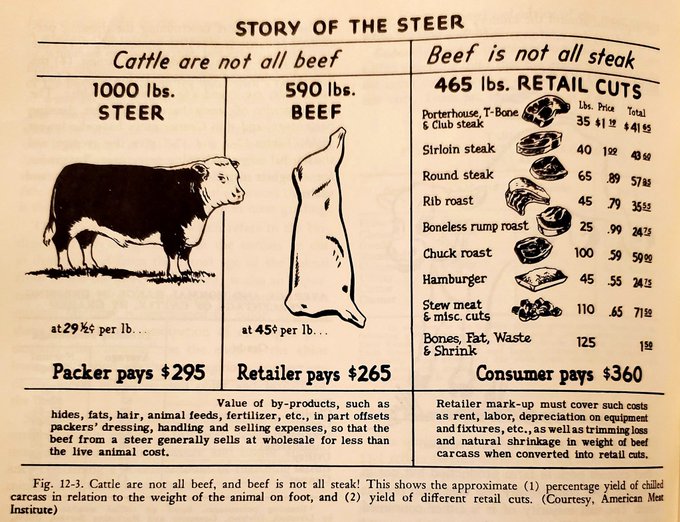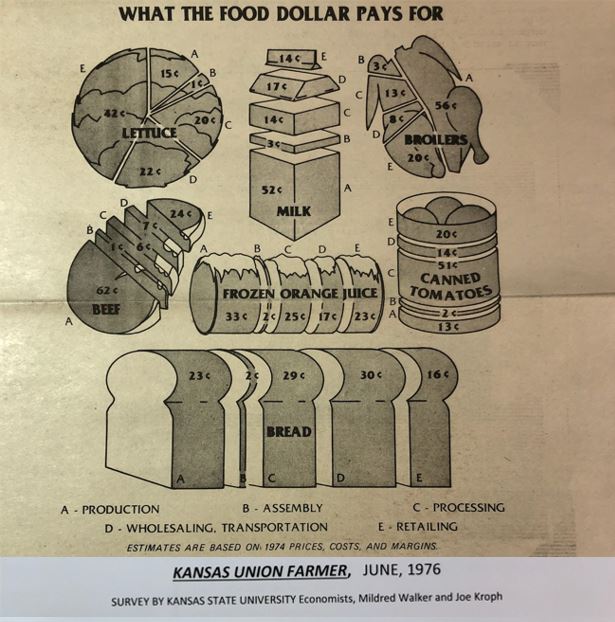Mini-Big meatpacking plants have no chance of success without breaking up the conglomerates. And even then, are smaller versions of the inefficient big plants that depend on below-cost-of-production cattle, reduced animal welfare, worker exploitation, and environmental degradation, a good idea?
Fives years after Dr. Heffernan’s presentation, IBP sold to Tyson. Big chicken bought big beef. Cattle producers in the U.S., and around the world, became a cost to be reduced, the equivalent of chicken farming serfs.
“This concentrated economic and political power is costing producers over $1,500 per head …”
The discussion about building back a better food system must focus on local/regional development with much smaller plants, that more directly connect producers to consumers.
Dr. William Heffernan advises Bob Peterson, President and CEO of IBP, the largest meatpacker in the world, that in the food industry, IBP was really quite small.
In 2000, when I started selling meat instead of cattle, cattle hides were around $75 per head, plus other offal/drop credits. The slaughter plant paid me. Today, with the loss of competition, cattle hides have zero value, and are going to the compost pile.
In 1976, IBP, the biggest meatpacker in the world was leading the way in eliminating smaller competitors (WSJ termed it the “Death March”). The cattle producer was receiving 62% of the consumer beef dollar, down from 65 to 70% when many meatpackers were competing within their regions for livestock. Today the producer share is 34%. The low in May of 2020 was 27%. This concentrated economic and political power is costing producers over $1,500 per head currently.
Our current industrial, corporate controlled food system has failed. New infrastructure must steer clear of market predators, returning far more of the consumer dollar back to producers and workers.














